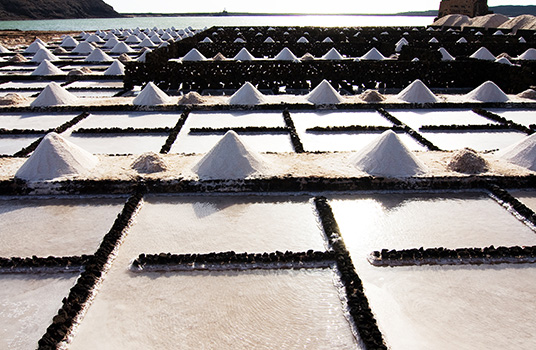Canary Islands are a group of 13 Spanish islands in the Atlantic Ocean. They lie about 60 miles (97 kilometers) off the northwest coast of the mainland of Africa. The islands cover 2,875 square miles (7,447 square kilometers) and have 626 miles (1,007 kilometers) of coastline. They have a population of over 2 million. The largest island is Tenerife.

The Canary Islands make up one of 17 autonomous communities (self-governing regions) of Spain. The regional government is divided between two capital cities—Las Palmas de Gran Canaria and Santa Cruz de Tenerife. The islands are further divided into two provinces. The province of Santa Cruz de Tenerife includes the islands of Tenerife, La Palma, Gomera, and Hierro. The province of Las Palmas includes Gran Canaria, Lanzarote, and Fuerteventura.
The Canaries are mountainous, and many of the mountains are volcanic. The highest peak is 12,198-foot (3,718-meter) Pico de Teide. The islands have fertile soil. Crops include bananas and other fruit, flowers, and vegetables. The islands’ natural beauty and mild climate have helped to make tourism the largest industry.
Canary Islanders are mainly of Spanish descent. Some are partly descended from the islands’ original inhabitants, called Guanches. The Guanches spoke Berber languages. Historians believe they originally came to the islands from North Africa. The people of Gomera communicate over distances with a whistled language that once imitated the language of native people on that island but now imitates spoken Spanish.

Sailors in ancient times gave the name Canaria from the Latin word canis (dog) to one island, probably Gran Canaria, because they found large, fierce dogs there. The name later spread to the entire island group. Canary birds are so called because they were first found on the Canary Islands. The kingdom of Castile, now part of Spain, conquered the Canary Islands during the 1400’s. The Portuguese also tried, though unsuccessfully, to seize lands there. But they acknowledged Castile’s claim to the islands in a 1479 treaty.
The islands became important supply and fueling stations for ships. In 1927, Spain divided them into two provinces. Spain’s Constitution of 1978 provided for grouping the nation’s provinces into autonomous communities. The Canary Islands became an autonomous community in 1982.
See also Columbus, Christopher; Gran Telescopio Canarias (GTC).
